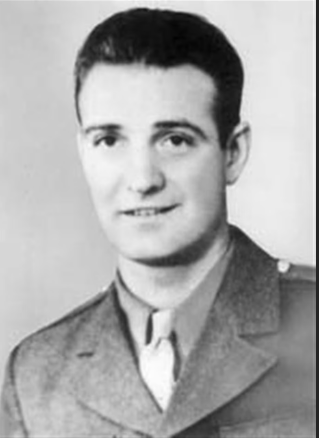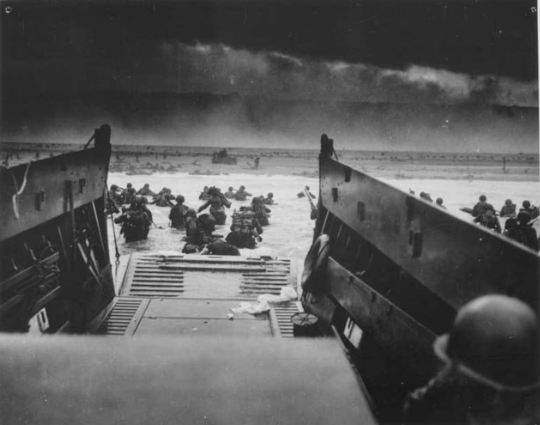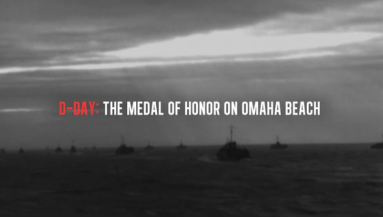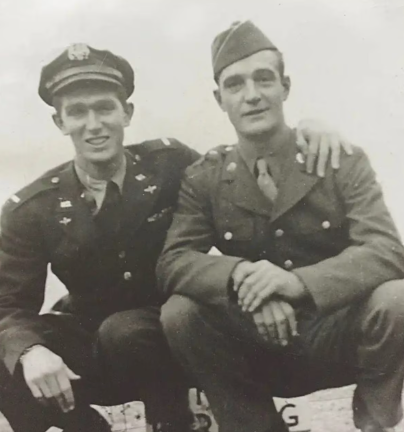
With the 80th anniversary of D-Day — the “Battle of Normandy” — coming up in a little more than a month, it is only fitting that the Medal of Honor recipient recognized in this week’s DoD “Medal of Honor Monday” is one of the heroes who participated in “the greatest amphibious operation ever undertaken.”*
June 6, 1944, was the day when more than 150,000 allied troops from 13 countries stormed the beaches of Normandy marking the beginning of the end of World War II.

It was a day when 2,501 American troops gave their lives.
It was also a day when so many displayed extraordinary heroism. Twelve service members would be awarded the Congressional Medal of Honor — nine posthumously.
A video at the Congressional Medal of Honor Society web site chronicles the actions of three of these heroes: Pvt. Carlton William Barrett, Lt. Jimmie W. Monteith Jr. and Army Tech. 5th Grade John J. Pinder Jr.

Monteith and Pinder were killed on June 6, 1944, and received the Medal of Honor posthumously.
Barrett survived, was presented with the Medal of Honor on November 17, 1944, and died on March 3, 1986.
Army Tech. 5th Grade John J. Pinder Jr. is this week’s honoree.
Here is Katie Lange at DoD News:
…Pinder was drafted into the Army in January 1942. He was a radio operator assigned to the 16th Infantry, 1st Infantry Division.
While overseas, Joe Pinder took part in various combat campaigns, including those in Africa and Sicily, before being tapped to take part in D-Day — the biggest land, air and sea invasion in history that finally gave the Allies a foothold in Nazi Europe. By this time, Pinder had worked his way up to the rank of technician 5th grade, the equivalent of a corporal.
On June 6, 1944, Pinder’s unit was in the first wave of Allied troops to assault Colleville-sur-Mer — better known as Omaha Beach. Unfortunately, the Germans were ready for them and immediately began pummeling transport ships before troops were able to land near shore.
An artillery shell landed near Pinder’s boat and tore holes in it, killing some men immediately and causing chaos among those left inside. As the vessel began to fill with water, its ramp opened to let the men out about 100 yards offshore. Devasting machine gun and artillery fire rained down on them as they tried to wade their way to land in waist-deep water. Many were killed before they even got to shore.
As Pinder struggled through the waves, he carried vitally important radio equipment on his shoulder — and back then, radios used in war weighed about 80 pounds. He was only a few yards from his boat when he was hit twice by enemy fire, with one hit tearing into the left side of his face. Witnesses said Pinder continued forward holding the equipment in one arm and the flesh from his face with the other hand.
Refusing to take cover or get medical attention, Pinder delivered the radio to the shore. He then turned around and went back into the fire-swept surf to gather more parts and equipment. He knew setting up communications was crucial to directing naval and air support that could take out the German installations decimating the shoreline. It was the only way they would survive the ordeal.
Pinder ran back into the surf twice that day, despite the fierce pain he suffered. On the third trip, he was hit a few times by a machine gun, but he still refused to stop. He got back to the beach and helped troops set up the communications equipment before passing out from blood loss. He died later that day.
Lange writes that one of Pinder’s younger siblings, Harold Howard “Hal” Pinder, had also been drafted as a bomber pilot in the Army Air Corps and that the two brothers met up in England in 1943. (Below)

Nazi fighters attacked Hal Pinder’s B-24 Liberator while on a bombing mission over Germany on 29 January 1944. His B-24 crashed in Belgium. Hal was taken prisoner by the Nazis and returned home 14 months later, when the war ended. He was awarded the Distinguished Flying Cross with Bronze Star. The younger Pinder died on 21 October 2008.
His brother, Medal of Honor Recipient John Pinder, born in McKees Rocks, Pennsylvania June 6,1912, was initially buried at a U.S. military cemetery in Normandy, but was returned home in 1947 and now rests in Grandview Cemetery, Burgettstown, Pennsylvania.
——
* Douglas Brinkley, “The Longest Day,” Time Magazine
















